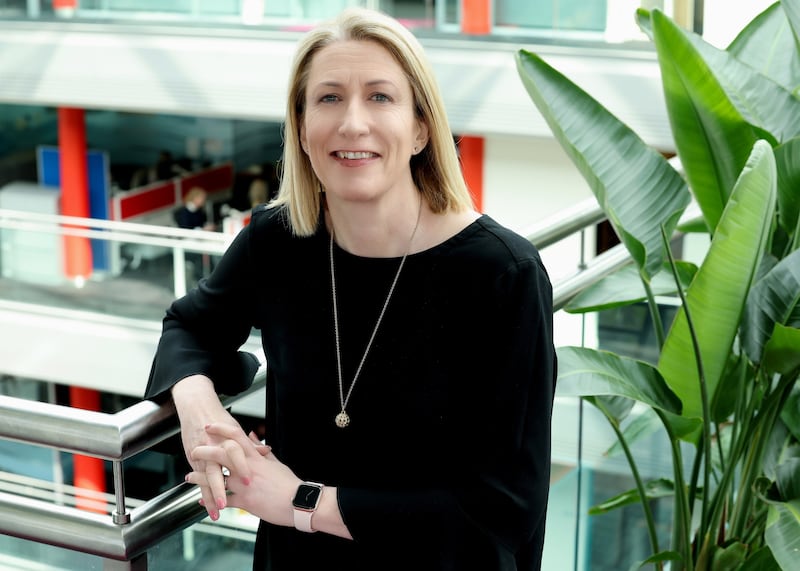Although we have seen tremendous advances in the provision of healthcare over the past decade, global healthcare systems, organisations and partners are recognising the need to fundamentally reconsider how and where we deliver healthcare.
To address current and future challenges, we are seeing a reorientation of services and delivery models towards prevention and the preservation of health and wellbeing.
Yvonne Mowlds, PwC healthcare lead, notes that in Ireland over the last decade we have seen some real improvements in our population health with an increase in average life expectancy of almost two years in both men and women, with men now reaching an average age of 81 while women are now living to 84.
During this period there has also been significant investments and enhancements to our health service. “For example, according to the Department of Health’s Health in Ireland Key Trends 2022, there has been a 35 per cent increase in full-time staff in our health services since 2012 and a 200 per cent increase in public health capital expenditure over that period,” Mowlds says.
‘A gas emergency would quickly turn into an electricity emergency. It is low-risk, but high-consequence’
How LEO Digital for Business is helping to boost small business competitiveness
‘I have to believe that this situation is not forever’: stress mounts in homeless parents and children living in claustrophobic one-room accommodation
Unlocking the potential of your small business

However, there are a number of challenges facing our healthcare system in Ireland. These are not unique to Ireland, and they are replicated to degrees in most modern healthcare systems around the world, says Mowlds.
These challenges include the continued impact of the pandemic as healthcare systems continue to recover from its effects. We are also seeing a growing and ageing population coupled with an increasing prevalence of largely preventable chronic disease.
This, she says, “is overwhelming many healthcare systems in their ability to deliver care by traditional means and in traditional settings”.
She also cites the critical global shortage of healthcare workers as a major challenge, one that is compounded by high levels of burnout and workplace attrition.
“We are all aware of the rising costs of delivering healthcare and the challenges that many systems have of trying to do more with the same or less,” she adds.
In addition to these challenges, the public has become more demanding of the care they receive and where they receive it. Through the myriad of available fitness apps, wearables and sensors patients are already empowering themselves with their own health data and want to be allowed to co-design their personalised management and treatment.
Healthcare systems are transforming to address these challenges
PwC’s recent Future of Health study suggests that by 2035 we will see healthcare systems increasingly focus on prevention and preservation of health and wellbeing. This will support earlier care intervention which will lead to better outcomes and, in turn, cost reductions. Within this future vision, care delivery will be supported and enabled by advances in technology, data analytics, AI and robotics.
“This means that we are going to see our healthcare system continue to transform and to deliver care through a much more integrated and interconnected ecosystem,” says Mowlds. “Patients are embracing new technology and increasingly expect care to be supported and enabled by it.”
“The hospital of the future will be a network of physical and virtual assets, which will enable people to experience more care in their homes and in their community, both virtually and face-to-face,” Mowlds explains.
According to a recent PwC study of the top 30 hospital organisations in the US, at least 100 modernisation projects are under way, with more than $3.5 billion (€3.2 billion) being invested in remote monitoring, care at home and so-called digital front door capabilities.
Here in Ireland, Mowlds says, we are seeing a similar focus on investing in the transformation of care delivery, such as the growing popularity of virtual clinics, a pandemic-induced necessity that has now become a feature of everyday care. These offer patients and healthcare professionals’ access, convenience and efficiency.
“Whether it’s digital or workforce or infrastructure, different healthcare systems around the world are at different stages in relation to their transformation journey,” she explains. “In the Irish context, we already have Sláintecare, which is all about continuing to drive integrated care and to shift care to the community. To deliver Sláintecare and its benefits we will need to continue to invest in our digital and technology capabilities,” she says.
The shift in focus towards preventative care is already happening in Ireland. “The enhanced community care programme is currently being implemented and has to date brought over 2,500 new staff into the workforce of the community healthcare networks, chronic disease and older persons specialist teams. These teams are providing end to end integrated care to enable patients to be supported in the community and closer to home,” she explains.
“The Healthy Ireland strategy is being implemented widely throughout the country. This is helping people take ownership of their health and engage in better behaviours when it comes to prevention.” These and similar initiatives need to continue at pace and with appropriate investment, she adds.
“The positive results we have had in Ireland in terms of advances in population health are a success,” Mowlds says. “However, there are still many challenges in our healthcare system. Transformation and the continued adoption of technology are key to building a sustainable, integrated and interconnected patient-centred healthcare ecosystem that delivers on the vision of Slaintecare.”













